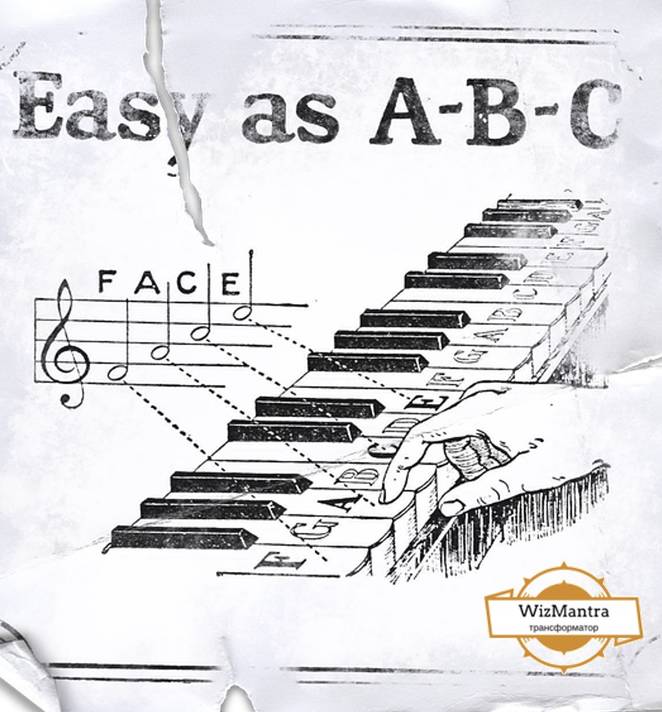Topics Syllabus Covered in Advance English Grammar
The English language, reading/writing is a complex system that includes numerous rules, structures, and elements that govern how words, phrases, and sentences are constructed. To become proficient in English, it is essential to understand the fundamentals of advanced English grammar, including complex sentence structures, modal verbs, reported speech, passive voice, relative clauses, gerunds and infinitives, conditionals, prepositions, articles, and conjunctions. In this article, we will provide an overview of each of these topics.
Complex Sentence Structures:
A complex sentence is a sentence that contains an independent clause and at least one dependent clause. An independent clause is a group of words that can stand alone as a sentence, while a dependent clause cannot. A dependent clause depends on an independent clause to make sense. Complex sentences are often used to express relationships between ideas, such as cause and effect, time, and contrast.
There are several types of dependent clauses, including adverbial clauses, relative clauses, and noun clauses. Adverbial clauses modify the verb in the independent clause and answer questions such as when, where, why, how, and to what extent. Relative clauses modify a noun in the independent clause and begin with relative pronouns such as who, whom, whose, that, and which. Noun clauses function as nouns in the sentence and can act as the subject, object, or complement.
Parallelism:
In complex sentences, maintaining parallelism is crucial for clarity and coherence. Parallelism refers to the repetition of a chosen grammatical structure within a sentence. This technique enhances the readability and balance of the sentence, making it easier for the reader to understand the relationship between the ideas being expressed. For example, “She likes reading, writing, and to jog” should be revised to “She likes reading, writing, and jogging” to maintain parallelism.
Compound-Complex Sentences:
Beyond complex sentences, there are also compound-complex sentences, which combine multiple independent clauses with at least one dependent clause. These sentences allow for even more intricate expression of ideas, often reflecting the multifaceted nature of thoughts and relationships. For example, “I finished my homework, but I was still tired because I had stayed up late the night before.”
A complex sentence is a sentence that contains an independent clause and at least one dependent clause. An independent clause is a group of words that can stand alone as a sentence, while a dependent clause cannot. A dependent clause depends on an independent clause to make sense. Complex sentences are often used to express relationships between ideas, such as cause and effect, time, and contrast.
There are several types of dependent clauses, including adverbial clauses, relative clauses, and noun clauses. Adverbial clauses modify the verb in the independent clause and answer questions such as when, where, why, how, and to what extent. Relative clauses modify a noun in the independent clause and begin with relative pronouns such as who, whom, whose, that, and which. Noun clauses function as nouns in the sentence and can act as the subject, object, or complement.
Modal Verbs:
Modal verbs are auxiliary verbs that express modality, which refers to the speaker’s attitude toward the action or state described in the sentence. The most common modal verbs are can, could, may, might, shall, should, will, would, and must. They can express a variety of meanings, including ability, permission, obligation, possibility, and prediction.
For example, “I can swim” expresses ability, while “You must finish your homework” expresses obligation.
Modal verbs have several characteristics that distinguish them from other verbs. They are always followed by the base form of the main verb, and they do not take -s or -ed endings in the third person singular. They also have no infinitive or participle forms.
Semi-Modals:
In addition to modal verbs, there are also semi-modals like “ought to,” “used to,” “need to,” and “dare to,” which share some characteristics of modals but behave like regular verbs in other ways. These semi-modals add subtlety and nuance to sentences, allowing speakers to express advice, habits, or necessity with more flexibility.
Reported Speech:
Reported speech, also known as indirect speech, is used to report what someone else has said without using their exact words. Reported speech typically involves a change in verb tense, pronoun, and word order.
For example, “He said, ‘I am hungry'” becomes “He said that he was hungry” in reported speech.
There are several rules to follow when using reported speech. The tense of the reported speech is usually shifted back one tense, and the pronouns are often changed to reflect the new speaker. Direct speech marks are also typically removed.
Shifting Time Expressions:
When using reported speech, it’s also important to adjust time expressions. For example, “today” might change to “that day,” and “tomorrow” could become “the next day.” These shifts are necessary to maintain clarity and coherence when the time frame of the original statement differs from the time of reporting.
Passive Voice:
The passive voice is a grammatical construction in which the subject of the sentence is acted upon by the verb. In the passive voice, the focus is on the action rather than the person or thing performing the action. The passive voice is formed using a form of the verb “to be” and the past participle of the main verb.
For example, “The cake was baked by Mary” is in the passive voice, while “Mary baked the cake” is in the active voice.
Usage and Misuse of Passive Voice:
While the passive voice is useful for emphasizing the action or the receiver of the action, overuse or inappropriate use can lead to vague or impersonal writing. It’s important to balance passive constructions with active voice to maintain a clear, engaging writing style. In scientific writing, however, the passive voice is often preferred to maintain objectivity.
Relative Clauses:
Relative clauses are an essential part of advanced English grammar. They provide additional information about a noun or pronoun in the sentence and can be essential or non-essential. Essential relative clauses provide necessary information and are not separated by commas, while non-essential relative clauses provide extra information and are separated by commas.
For example, consider the sentence: “The woman who lives next door is a doctor.” In this sentence, “who lives next door” is an essential relative clause because it provides essential information about the noun “woman.” Without this clause, the sentence would simply state that “The woman is a doctor,” which is not as informative.
Reduced Relative Clauses:
In some cases, relative clauses can be reduced to make sentences more concise. For instance, “The woman who is sitting in the front row is my teacher” can be reduced to “The woman sitting in the front row is my teacher.” This reduction streamlines the sentence while retaining the necessary information.
Gerunds and Infinitives:
Gerunds and infinitives are both verbal nouns that can function as subjects, objects, or complements in a sentence. A gerund is a verb that ends in “-ing” and functions as a noun, while an infinitive is the base form of a verb preceded by “to” and can also function as a noun.
For example, consider the sentence: “Running is good exercise.” In this sentence, “running” is a gerund that functions as the subject of the sentence.
In contrast, consider the sentence: “I like to run.” In this sentence, “to run” is an infinitive that functions as the direct object of the verb “like.”
Verbs Followed by Gerunds or Infinitives:
Some verbs are followed by gerunds, some by infinitives, and some can take both but with a change in meaning. For instance, “stop” can be followed by a gerund (“He stopped smoking”) or an infinitive (“He stopped to smoke”), with each structure conveying a different meaning. Mastering this distinction is key to advanced grammar proficiency.
Conditionals
Conditionals are used to describe situations or events that may happen in the future depending on certain conditions. They are typically formed using if-then clauses and can be classified into four types based on the likelihood of the event occurring.
The first conditional describes events that are likely to happen in the future if a certain condition is met. For example, “If it rains, the game will be cancelled.”
The second conditional describes events that are less likely to happen in the future, but are still possible. For example, “If I had more money, I would buy a new car.”
The third conditional describes events that are impossible because they already occurred in the past. For example, “If I had studied harder, I would have passed the exam.”
The zero conditional describes events that always happen when a certain condition is met. For example, “If you heat ice, it melts.”
Mixed Conditionals:
In advanced grammar, mixed conditionals are used to describe situations where the time in the “if” clause is different from the time in the main clause. These conditionals can reflect a present result of a past condition or a past result of a present condition. For example, “If I had taken the job, I would be living in New York now” mixes a past condition with a present result.
Prepositions
Prepositions are words that show the relationship between a noun or pronoun and other words in a sentence. They typically indicate direction, location, time, or manner.
For example, consider the sentence: “The cat is on the mat.” In this sentence, “on” is a preposition that shows the relationship between the noun “cat” and the noun “mat.”
Prepositional Phrases:
A prepositional phrase includes a preposition and the object of the preposition, along with any modifiers. These phrases provide additional information about time, location, manner, or reason in a sentence. For example, “She arrived at the station in the morning” includes the prepositional phrases “at the station” and “in the morning.”
Common Preposition Errors:
English learners often struggle with prepositions because their usage is not always logical or consistent. For instance, the difference between “interested in” and “interested on” can be confusing, as can the correct use of prepositions after certain verbs or adjectives. Understanding these
Articles
Articles are words that indicate the presence or absence of a noun in a sentence. There are two types of articles in English: definite and indefinite. Definite articles refer to specific nouns, while indefinite articles refer to non-specific nouns.
For example, consider the sentence: “The dog chased a cat.” In this sentence, “the” is a definite article that refers to a specific dog, while “a” is an indefinite article that refers to a non-specific cat.
Conjunctions
Conjunctions are words that connect words, phrases, or clauses in a sentence. There are several types of conjunctions, including coordinating conjunctions, subordinating conjunctions, and correlative conjunctions.
Coordinating conjunctions connect words, phrases, or independent clauses of equal importance. For example, “I like pizza and pasta.”
Subordinating conjunctions connect dependent clauses to independent clauses. For example, “I will go to bed when I finish my homework.”
Correlative conjunctions are used in pairs to connect words, phrases, or clauses. For example, “Either you come with me, or I will go alone.”







Leave a comment